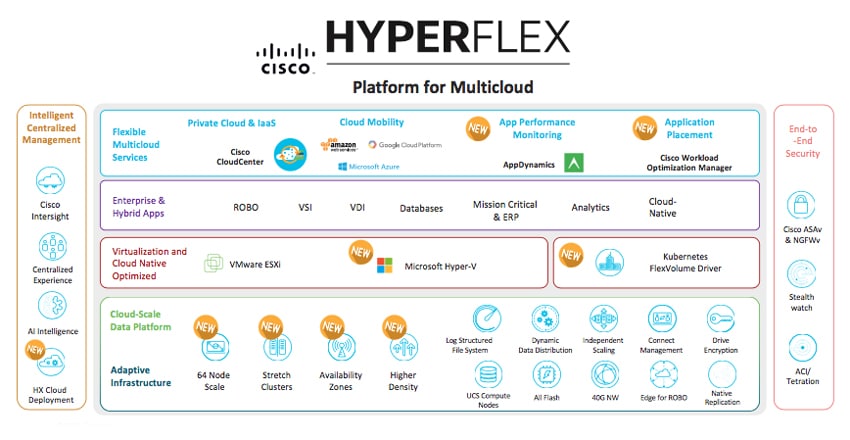 This morning Cisco announced new platform innovations and software updates for its HyperFlex hyperconverged infrastructure (HCI), HX 3.0. The newly updated software is said to deliver higher performance as well as greater simplicity for “any application, on any cloud, and at any scale.” This would make HyperFlex a platform that can enable deployment and development of both traditional and cloud native applications.
This morning Cisco announced new platform innovations and software updates for its HyperFlex hyperconverged infrastructure (HCI), HX 3.0. The newly updated software is said to deliver higher performance as well as greater simplicity for “any application, on any cloud, and at any scale.” This would make HyperFlex a platform that can enable deployment and development of both traditional and cloud native applications.
This morning Cisco announced new platform innovations and software updates for its HyperFlex hyperconverged infrastructure (HCI), HX 3.0. The newly updated software is said to deliver higher performance as well as greater simplicity for “any application, on any cloud, and at any scale.” This would make HyperFlex a platform that can enable deployment and development of both traditional and cloud native applications.

HCI has quickly gained the attention of the industry with its benefits but it still has some drawbacks. Cisco sees that networking and distributed file systems are often neglected and in turn can lower performance and scalability of clustered servers. In order to address this, the company took a new approach to HCI with a purpose-built HCI filesystem, HyperFlex, which was created by engineers for both high performance servers and networking technology. The latest version builds off of this and adds support for Microsoft Hyper-V, increased cluster scale with automated resiliency, container support, and new multi-cloud services among other benefits below.
Benefits include:
- Multi-hypervisor support: In addition to VMWare ESXi, HyperFlex has widened the choice of hypervisors with added support for Microsoft Hyper-V.
- Containers Volume Driver: Data platform enhancements include a FlexVolume driver to enable persistent volumes to Kubernetes managed containers enabling development and deployment of cloud-native application on HyperFlex.
- Enterprise Application Validations: HyperFlex is ready for a wide range of workloads with workload profiling and sizing tools available to support application migration projects. In addition to design and deployment guides for Virtual Server Infrastructure (VSI) and Virtual Desktop Infrastructure (VDI), Cisco Validated Designs are now available for mission critical database, analytic and ERP applications including Oracle, SAP, Microsoft, and Splunk.
- Application Performance Monitoring: AppDynamics for HyperFlex enables performance monitoring of hybrid applications running tiers on HyperFlex and across multiple clouds.
- Application Placement: Cisco Workload Optimization Manager (CWOM) for HyperFlex assists organizations with workloads placement analysis of workloads onto HyperFlex and the most economical infrastructure
- Cloud Mobility: Introduced last year, CloudCenter for HyperFlex enables workloads mobility onto HyperFlex from public and private cloud
- IaaS and Private Cloud: CloudCenter for HyperFlex also enables private cloud self- service IaaS capabilities to developers and administrators.
- Greater scalability and resiliency on-prem: Supporting organizations with higher virtual machine density, the HyperFlex clusters have been expanded to 64 node cluster scales with added resiliency in the fully-automated availability zones.
- Stretch clusters across datacenters: In order to meet the data protection and high availability requirements in global markets, HyperFlex can now be configured into stretch clusters for mission critical availability across geographies.
- Cloud-based management across datacenters: Cisco Intersight now supports HyperFlex Cloud Deployment, enabling customer a simplified capability to deploy HyperFlex clusters at any location remotely and concurrently.
Sign up for the StorageReview newsletter
